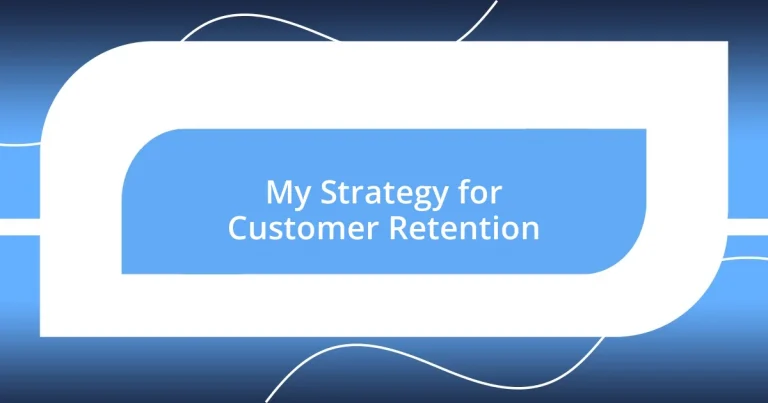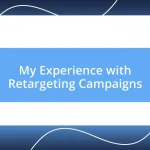Key takeaways:
- Customer retention is vital for business success, as loyal customers drive repeated sales and positive word-of-mouth, fostering a sense of community.
- Segmenting customers based on behaviors, demographics, and psychographics allows for tailored strategies that enhance loyalty and engagement.
- Implementing personalized communication, loyalty programs, and utilizing customer feedback are essential for improving customer relationships and measuring retention success.

Understanding Customer Retention Importance
Customer retention is the lifeblood of any successful business. When I think back to launching my first venture, I quickly learned the hard way that attracting new customers costs significantly more than keeping existing ones. It struck me how loyalty can drive repeated sales, creating a solid foundation that allows a brand to thrive, even in tough times.
Imagine investing so much time and effort in acquiring a new client, only to see them leave after a single purchase. It can be disheartening. I’ve experienced that gut-wrenching moment when a customer I had eagerly courted decided to take their business elsewhere. That experience reinforced my understanding that maintaining a loyal customer base fosters a sense of community, giving everyone a reason to return.
Moreover, loyal customers often become brand advocates, spreading positive word-of-mouth that is simply invaluable. I remember a situation where a regular customer referred several friends just because they loved how personalized my service was. This not only boosted my sales, but it also deepened my commitment to improving customer relationships. Such connections illustrate that customer retention isn’t just about profit; it’s about building lasting relationships that enhance both the customer experience and your brand reputation.
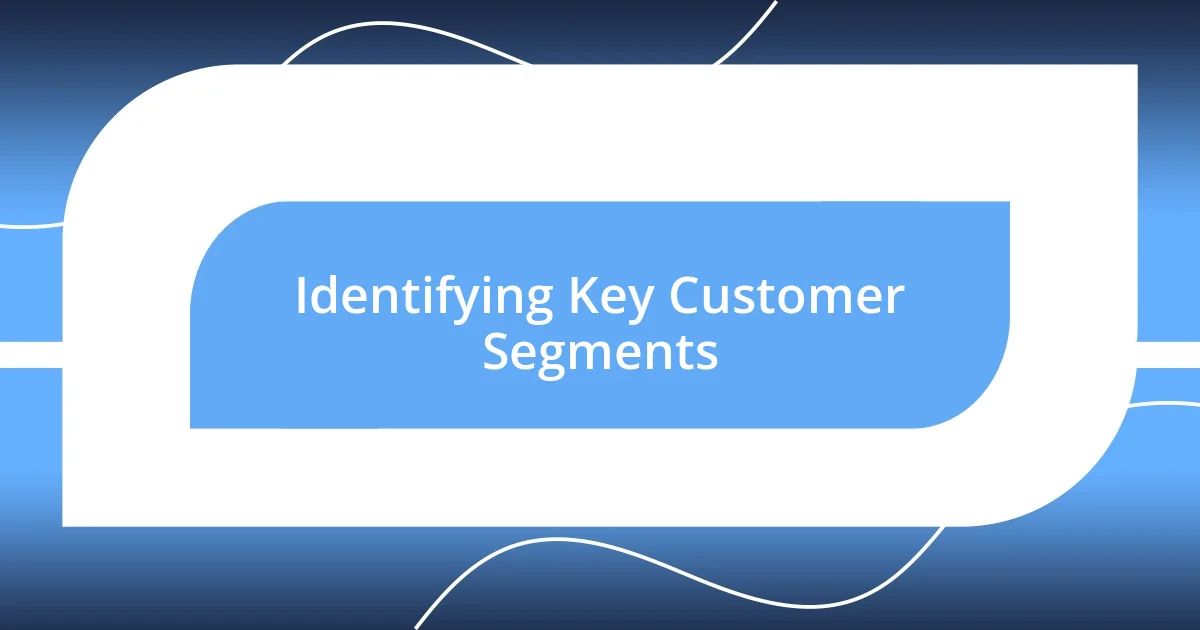
Identifying Key Customer Segments
Identifying key customer segments is crucial for any business wanting to enhance its customer retention strategy. From my experience, I’ve found that segmenting customers based on their behaviors, preferences, and purchasing patterns allows you to tailor your approach. For instance, I once targeted a loyalty program specifically for high-frequency buyers, which led to a substantial increase in repeat purchases. This taught me that understanding who your customers are can directly impact their loyalty and engagement levels.
Another approach is to utilize demographic data, such as age, gender, or location. In my case, I discovered that my younger customers preferred more vibrant marketing, while older patrons responded well to a more traditional approach. I remember feeling a sense of clarity when I adjusted my campaigns based on these insights. It not only made my communications more effective but also created a stronger bond with each customer segment.
Lastly, I realized that psychographic segmentation—understanding customers’ values, interests, and lifestyles—can provide even deeper insights. For instance, I catered to eco-conscious consumers by highlighting sustainable practices and products. This drew in a dedicated group that appreciated my commitment to the environment. Engaging with customers on this level required some trial and error, but the payoff in loyalty was undeniable.
| Customer Segment | Characteristics |
|---|---|
| High-Frequency Buyers | Regularly purchase, seek rewards |
| Demographic Segments | Age, gender, location-based |
| Psychographic Segments | Values, interests, and lifestyles |

Developing Personalized Communication Strategies
Developing a personalized communication strategy revolves around understanding your customers as individuals. I vividly remember a time when I reached out to a customer who hadn’t interacted with my business for a while. By referencing their previous purchases and asking for feedback on new offerings, I was not just making a sale; I was re-establishing a connection. It’s moments like these that confirm how much customers appreciate tailored communication. They want to feel valued, not just another number in a database.
Here’s how you can develop your own personalized communication strategies:
- Utilize Customer Data: Analyze past interactions to understand preferences.
- Tailor Messaging: Create targeted messages that resonate with individual customer interests.
- Leverage Automation: Use tools to send personalized emails or messages based on behavior.
- Engagement Follow-Ups: Reach out after purchases or significant interactions for feedback.
- Seasonal Campaigns: Personalize offers around customer-specific dates like birthdays or anniversaries.
Through my experiences, I discovered that connecting on a personal level doesn’t require grand gestures. Simple, well-timed messages can work wonders, filling customers with a sense of loyalty and appreciation that keeps them coming back.
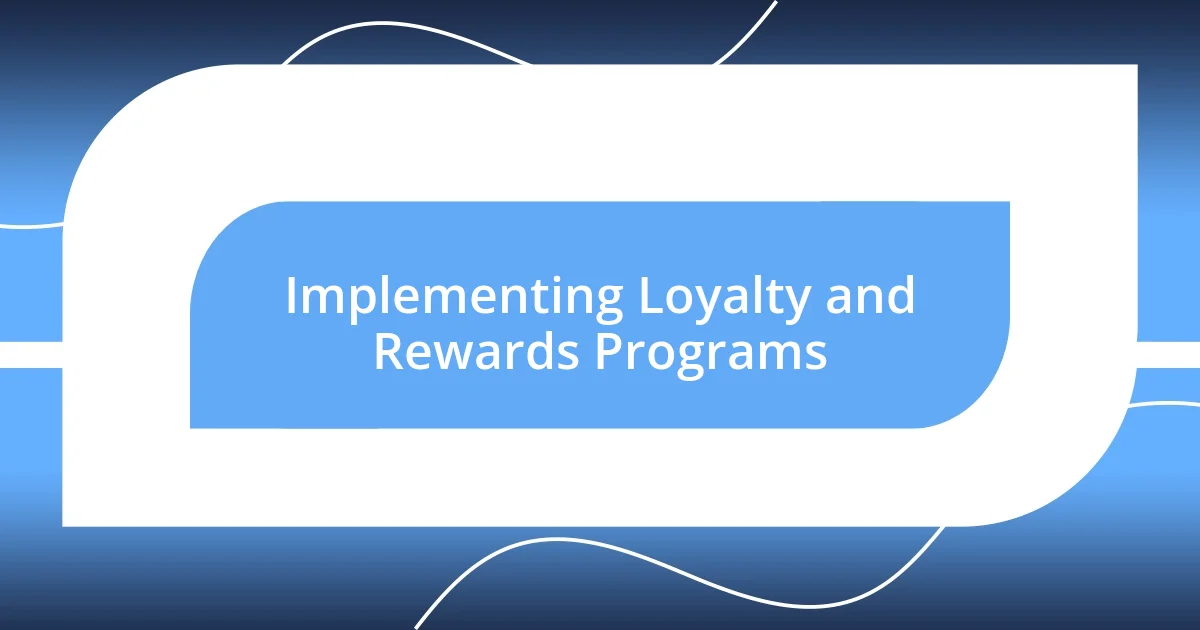
Implementing Loyalty and Rewards Programs
Implementing a loyalty and rewards program can truly transform how customers interact with your brand. I remember the excitement I felt when launching my first points-based system. Customers earn points for purchases, and I soon realized how motivating it was for them. It created a buzz that not only encouraged repeat transactions but also brought a competitive spirit into play—who doesn’t love a little friendly competition?
The key is to offer rewards that resonate with your audience. In my experience, simply discounting future purchases often misses the mark. When I introduced exclusive access to special events or early-bird sales for loyal customers, I noticed a massive uptick in engagement. Who would have thought that a VIP experience could create such a deeper emotional connection?
Don’t overlook the importance of communication in these programs. I learned that sharing progress about how close customers were to earning rewards made a real difference. For instance, when I sent out update emails showcasing their accumulated points, I saw increased excitement. It’s like a little friendly nudge: “Hey, you’re almost there! Keep going!” This not only drives purchases but fosters a deeper sense of belonging among your customers, making them feel like a valued part of the community.
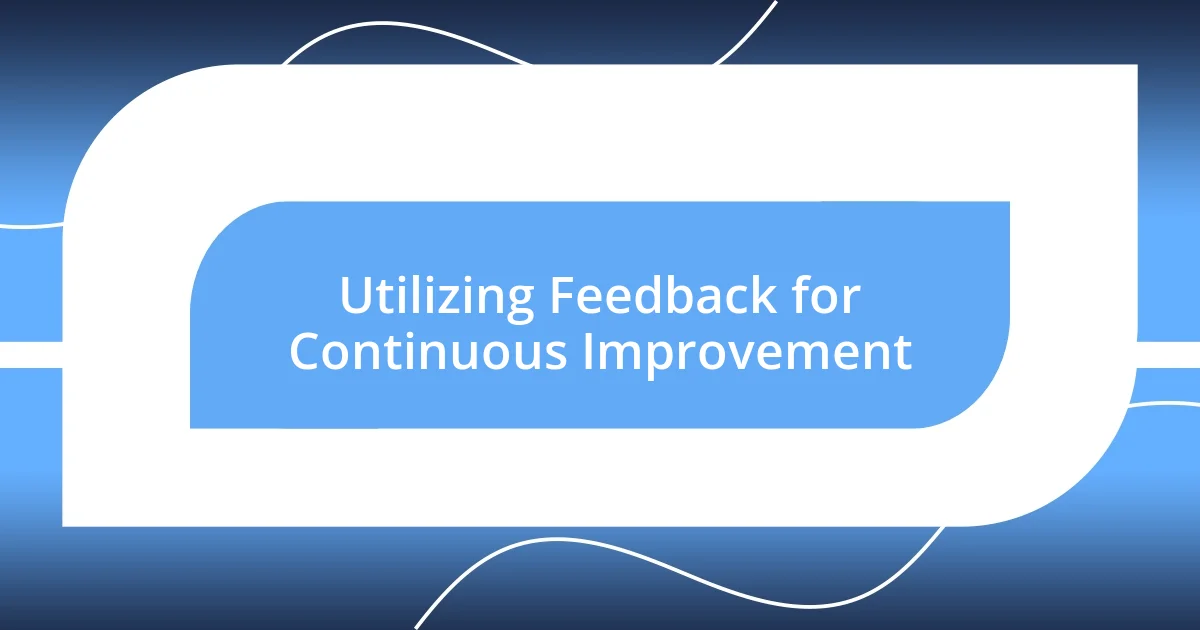
Utilizing Feedback for Continuous Improvement
Utilizing feedback is one of the most powerful tools for continuous improvement in any business. I remember when I first decided to send out post-purchase surveys. The responses were eye-opening. Customers shared insights I hadn’t considered, like the need for clearer product descriptions. This direct feedback not only helped refine my offerings but also made my customers feel heard. Isn’t it amazing how their words can shape your business’s evolution?
Equally important is how you respond to the feedback you receive. There was a time when I received a mix of positive and critical comments about our customer service. Instead of shying away from the criticisms, I embraced them. I scheduled a team meeting, and together we discussed the key points raised. The enthusiasm in that room was palpable as we brainstormed ways to enhance our service. That feedback transformed our approach and united the team around a common goal. Wouldn’t you agree that teamwork can lead to surprising innovations?
Finally, implementing systems to continuously gather and react to customer feedback establishes a cycle of improvement. I found that regular check-ins—like quarterly feedback sessions—keep the dialogue open. This not only allows me to adapt quickly but also fosters a culture of transparency. Customers appreciate knowing their opinions are valued. Doesn’t it feel good to know that your voice can drive change in a brand you care about? By maintaining this connection, I’ve built loyalty that translates into long-lasting relationships.
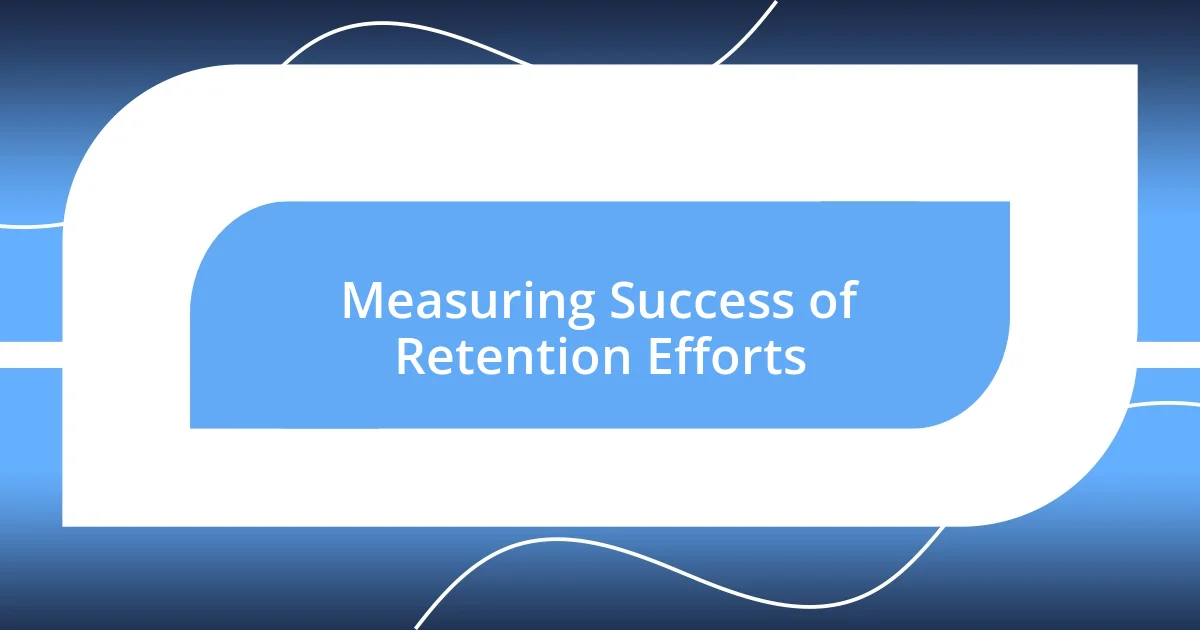
Measuring Success of Retention Efforts
Measuring the success of retention efforts can sometimes be challenging, but I’ve discovered that clear metrics make all the difference. For instance, monitoring customer lifetime value (CLV) has been a game-changer for my strategy. When I analyzed how much revenue a loyal customer generated over time, it illuminated the long-term impact of retention initiatives. Isn’t it fascinating how a broader view can reveal hidden treasures in customer relationships?
Another crucial aspect is tracking repeat purchase rates. I remember a moment of clarity when I realized my repeat purchase rate was stagnating. After implementing some targeted follow-up emails and personalized offers, I saw a noticeable increase. This small change convinced me of the power behind alongside systematic tracking. How often do we overlook the simplest actions that lead to meaningful results?
Customer engagement metrics, like social media interactions and email open rates, also offer valuable insights. I was particularly surprised when I noticed how much a customer loved sharing our product posts, which led to a significant uptick in organic referrals. It reinforced my belief that happy customers become vocal advocates. Wouldn’t you say that tapping into these emotional connections not only boosts retention but also builds a community? By focusing on these metrics, I’ve learned to tweak my retention strategies for maximum impact continuously.

Adapting Strategies for Future Trends
Adapting to future trends is essential for staying relevant in the fast-paced business landscape. I recall a time when I noticed my demographic shifting towards younger consumers who value sustainability. To meet their needs, I embraced eco-friendly packaging—something my customers appreciated immensely. Have you ever seen how a commitment to sustainability can inspire loyalty and turn first-time buyers into lifelong fans?
As technology evolves, so does the necessity for businesses to integrate new tools into their customer retention strategies. I recently invested in a customer relationship management (CRM) system that leverages artificial intelligence to predict customer behaviors. This tech has opened my eyes to personalized marketing opportunities I had never considered before. Isn’t it exciting to think that understanding your customer’s future purchasing habits can lead to proactive engagement?
Keeping an eye on market trends also requires flexibility in how we communicate with our customers. When I observed a rise in demand for instant interaction, I implemented live chat features on my website, which dramatically increased customer satisfaction. It’s such a rush to see how these small adjustments can lead to big wins. Have you thought about how being adaptable can not only benefit your business but also enrich the customer experience?












